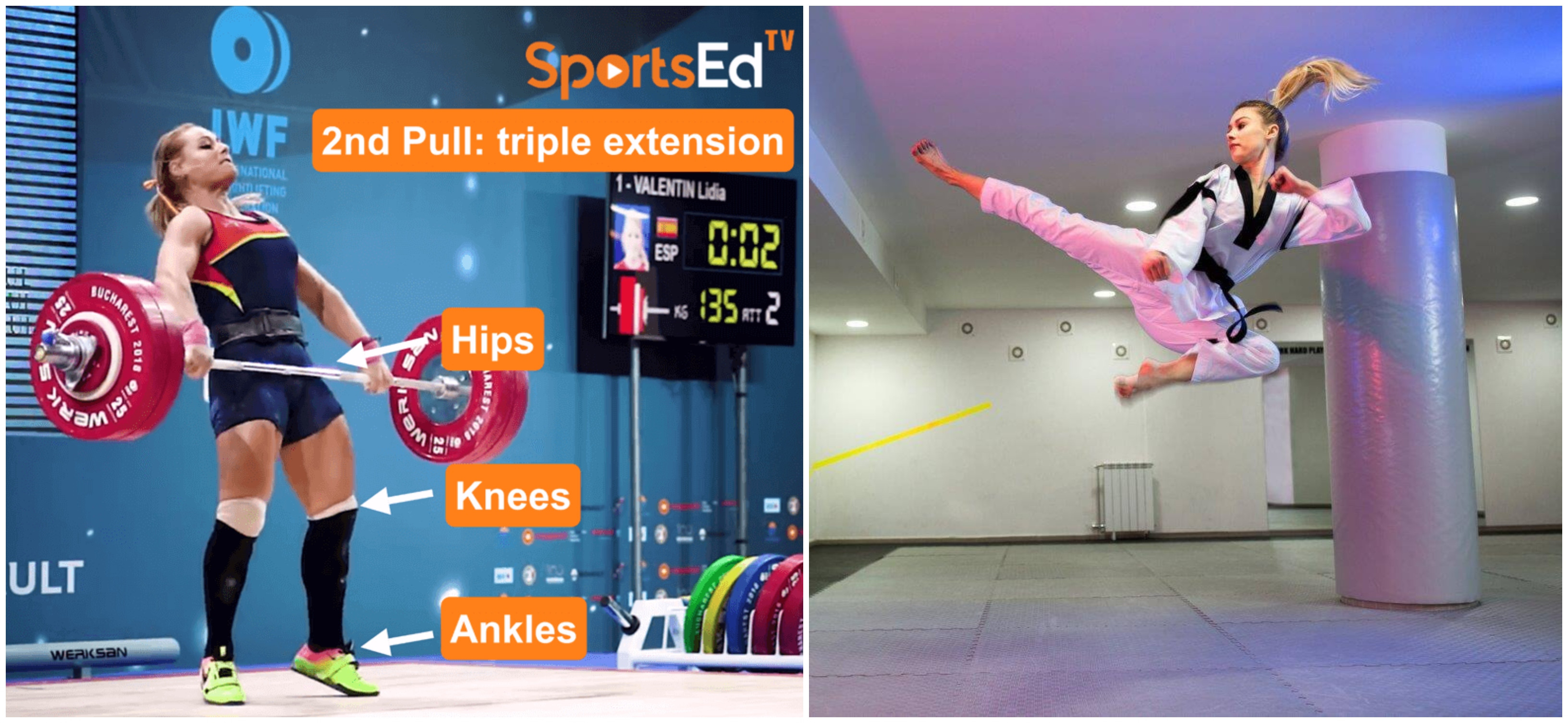Martial Arts, Taekwondo
Welcome and thanks for visiting...

Taekwondo: How to tie your belt
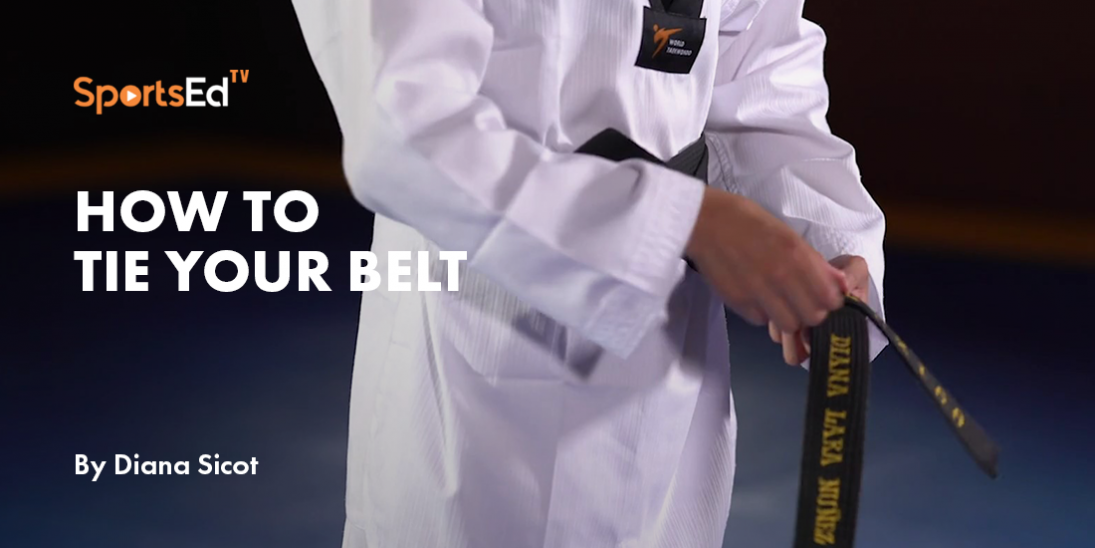
As a Taekwondo practitioner, one of the first things you learn is how to tie your belt. It may seem like a small detail, but the way you tie your belt can make a big difference in how you perform in class. A properly tied belt not only keeps your dobok (uniform) in place but also signifies your rank and level of mastery in the art. Whether you're a beginner or a seasoned pro, mastering the art of tying your Taekwondo belt is a must. In this ultimate guide, we will walk you through step-by-step instructions on how to tie your belt correctly. You'll learn the traditional method as well as some variations so you can find the one that works best for you. So, grab your belt, and let's get started on the path to becoming a Taekwondo master!
The Importance of Tying Your Taekwondo Belt Correctly
Tying your Taekwondo belt correctly is important for several reasons. Firstly, it keeps your uniform in place during training, which is important for safety reasons. A loose-fitting uniform can be a distraction and can even cause injury during training. Secondly, the way you tie your belt signifies your rank and level of mastery in the art. An adequately tied belt shows that you take your practice seriously and have respect for the art. Lastly, a well-tied belt can help you to feel more confident and focused during training.
Understanding the Different Parts of the Taekwondo Belt
Before we dive into the step-by-step instructions for tying your Taekwondo belt, it's important to understand the different parts of the belt.
The parts of a Taekwondo belt aren't typically given specific names or identified as separate entities. It's usually referred to as a single unit. However, in terms of physical components, a Taekwondo belt typically consists of the following parts:
- Straps: These are the long, flat pieces that wrap around the waist. The length and width of the straps can vary depending on the size of the individual. They are typically made from a durable, thick fabric such as cotton or a cotton-polyester blend.
- Center or Middle: This is where the belt crosses over itself on the front of the body. In some martial arts, the way the belt is tied can hold symbolic meaning.
- Loose Ends: These are the parts of the belt that hang down from the center. The length of these can also vary depending on how the belt is tied.
- Color: The color of the belt is significant in Taekwondo, as it represents the skill level of the practitioner. The progression often starts from white (beginner) and moves through colors like yellow, green, blue, and red, with black representing the highest level of expertise.
- Labels or Embroidery: Some Taekwondo belts have the practitioner's name, the name of the Taekwondo school, or symbols embroidered onto them. This is more common on black belts.
Step-by-Step Instructions for Tying Your Taekwondo Belt
Now that you understand the different parts of the Taekwondo belt, it's time to learn how to tie it correctly. Follow these step-by-step instructions:
Hold the center of the belt against your stomach, with the tag end on your right side and the working end on your left side
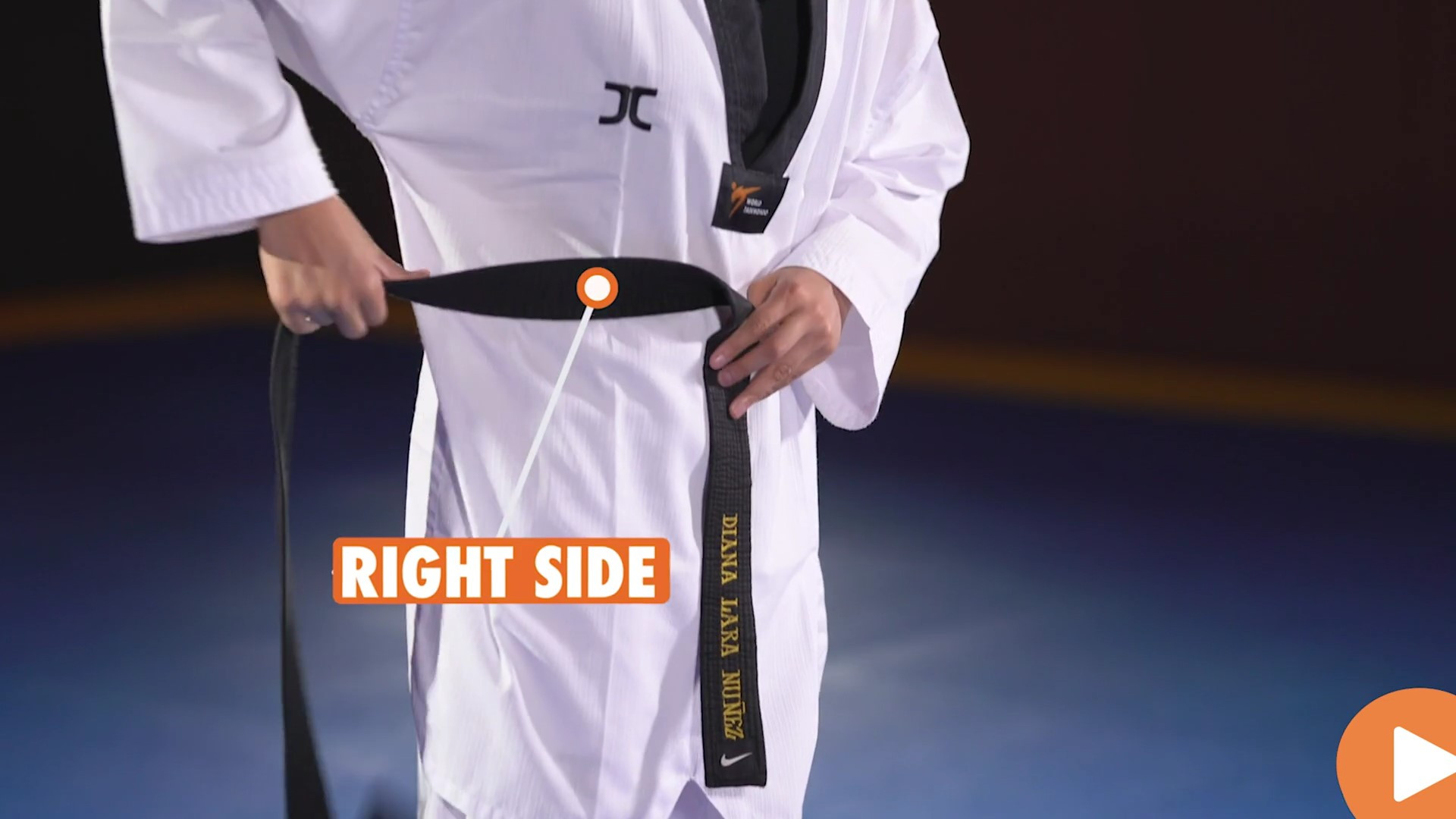
Wrap the working end around your waist
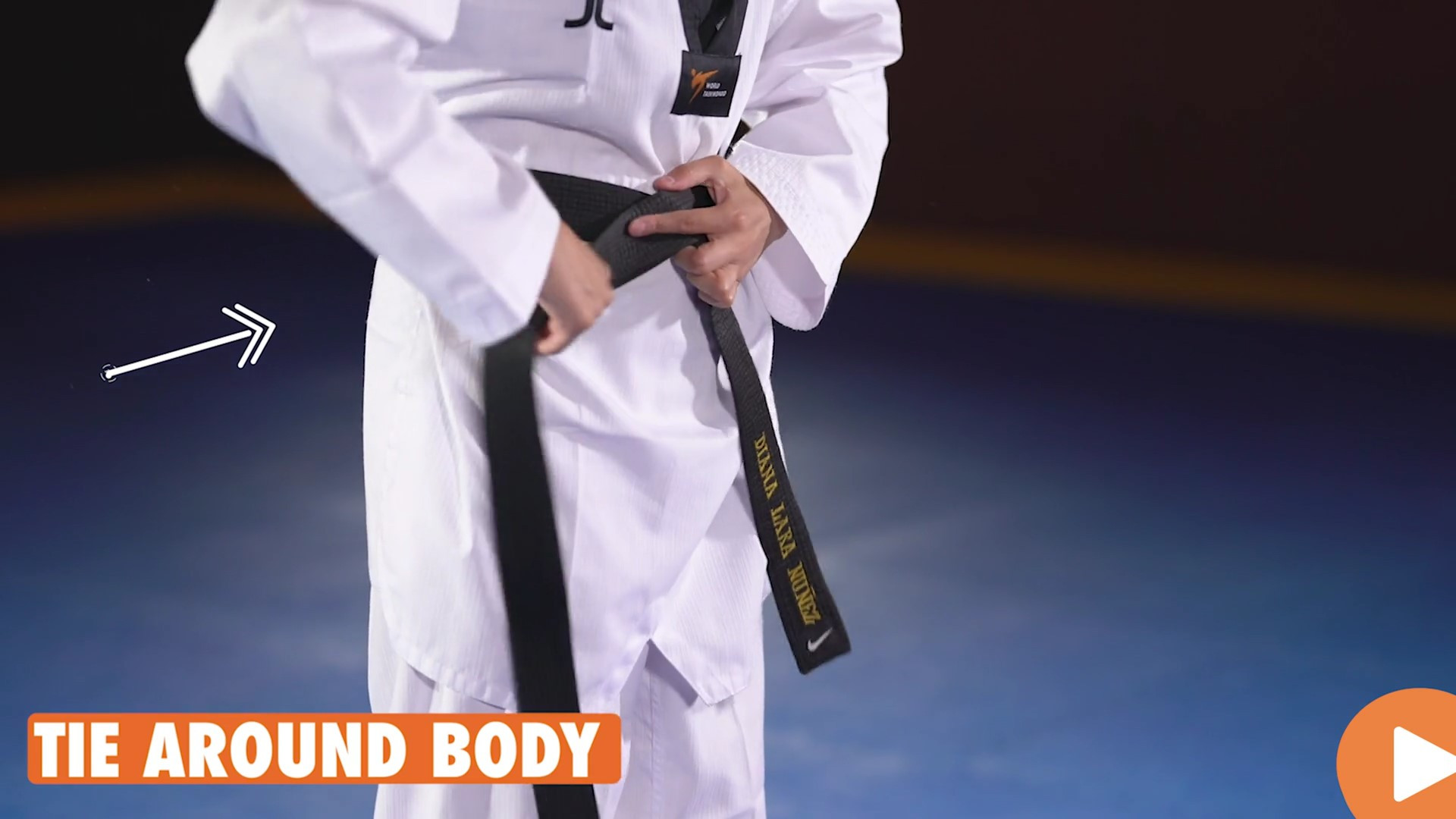
Bring the working end back to the front and cross it over the tag end and adjust the length
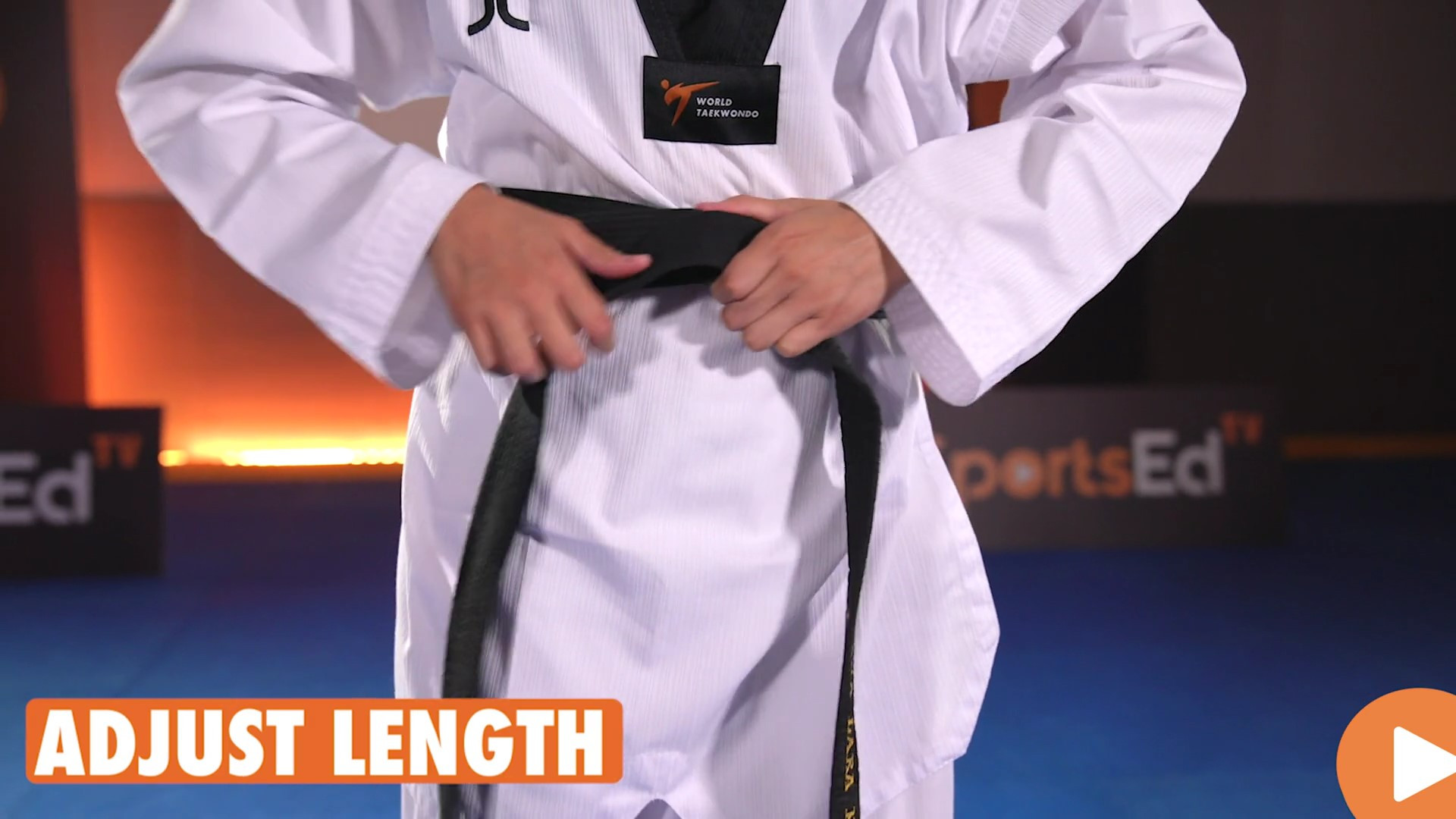
Tuck the working end under both layers of the belt
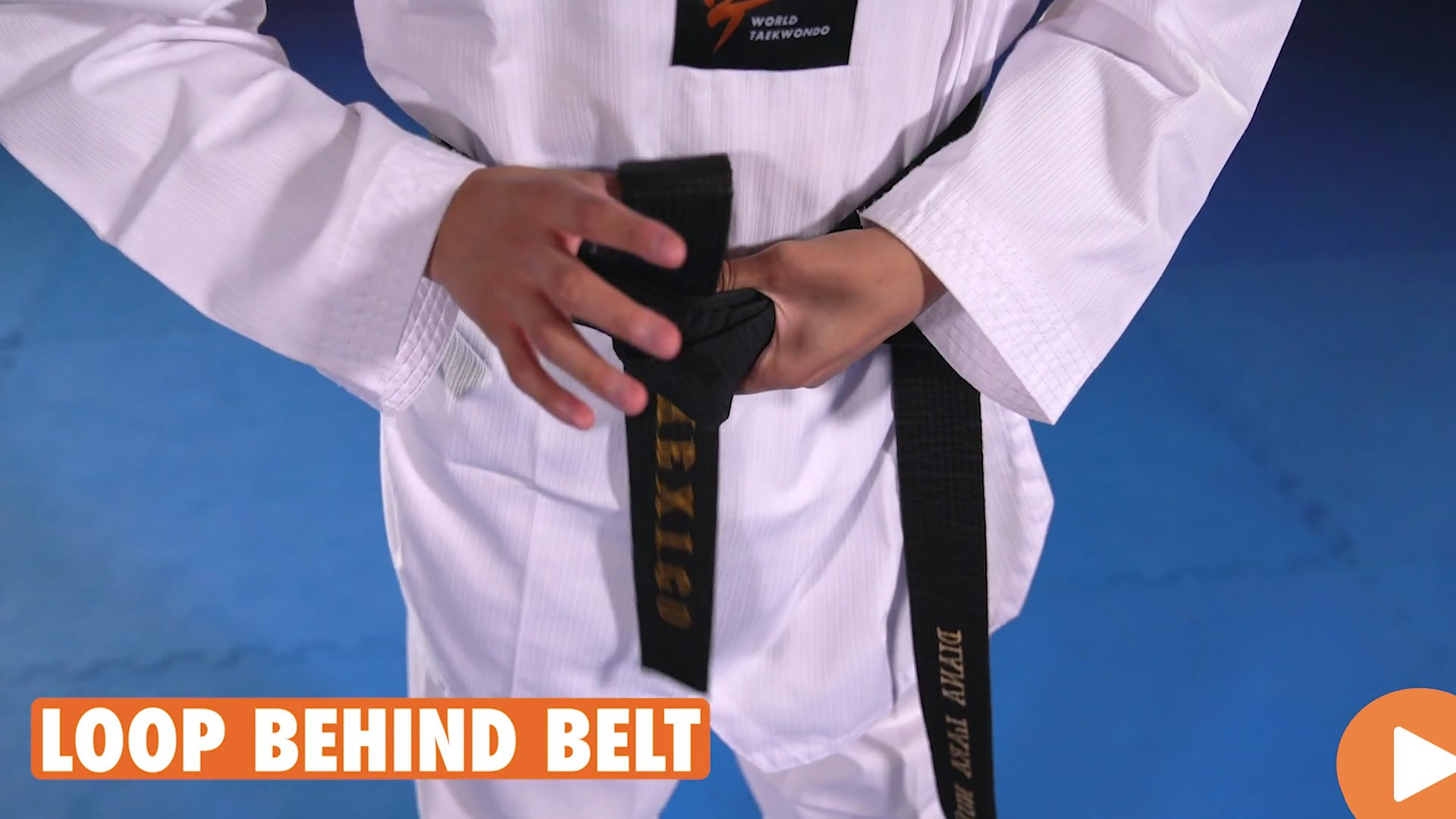
Make sure the belt is centered on your waist and adjust it if necessary. Pull the belt slightly
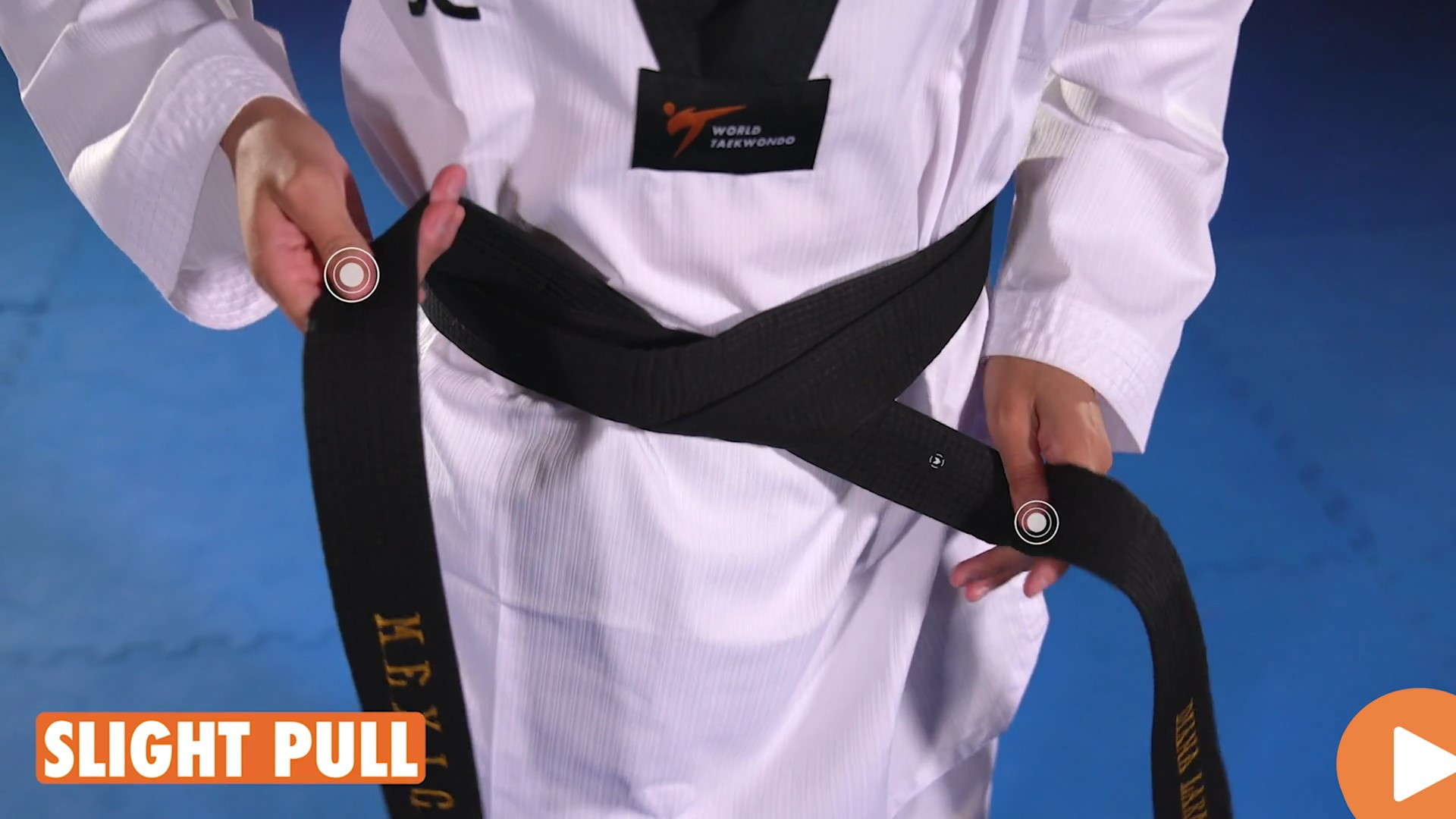
Take the tag end and bring it over the working end.
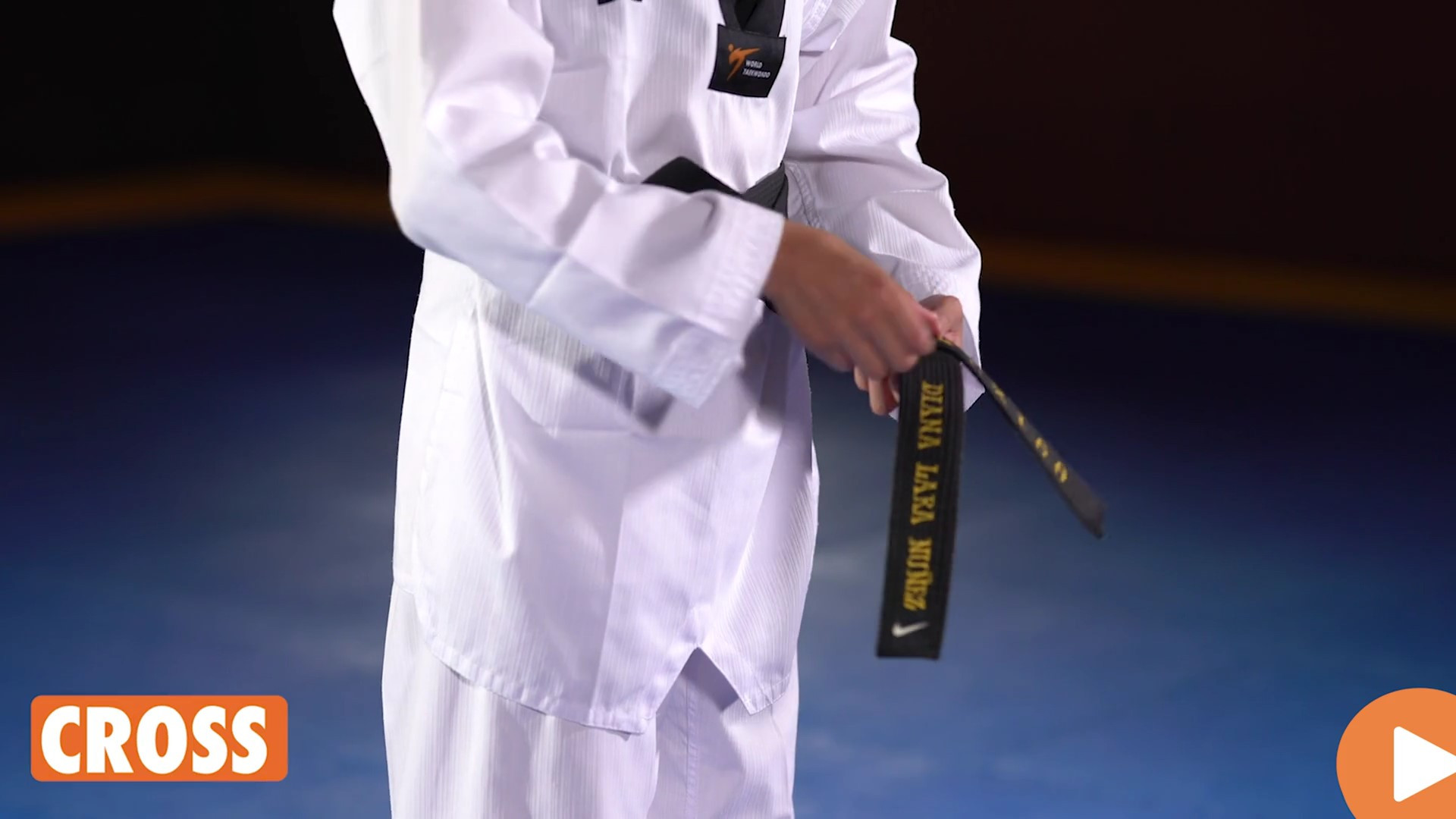
Loop in the middle
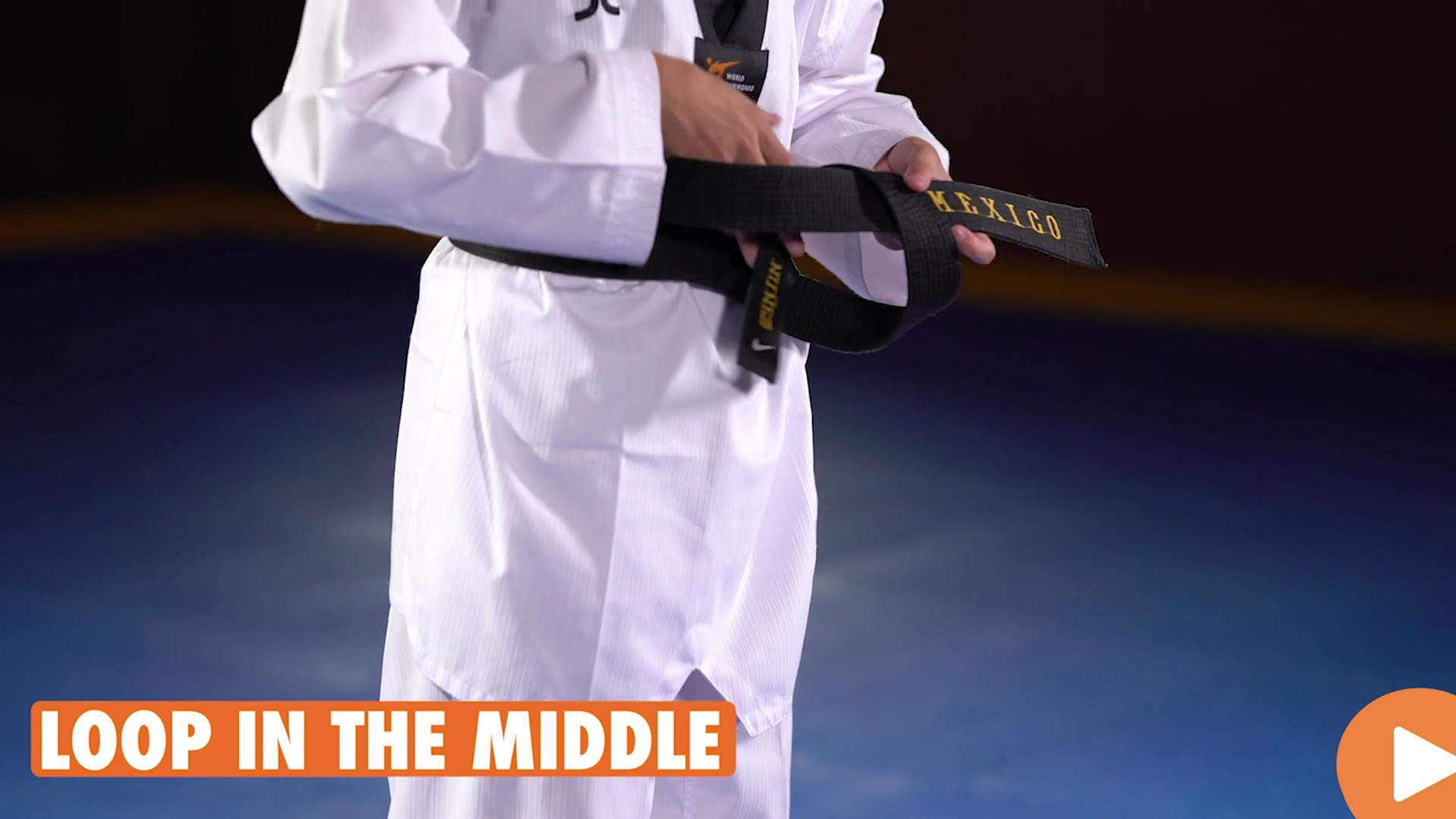
Check the length and adjust to make sure it is even.
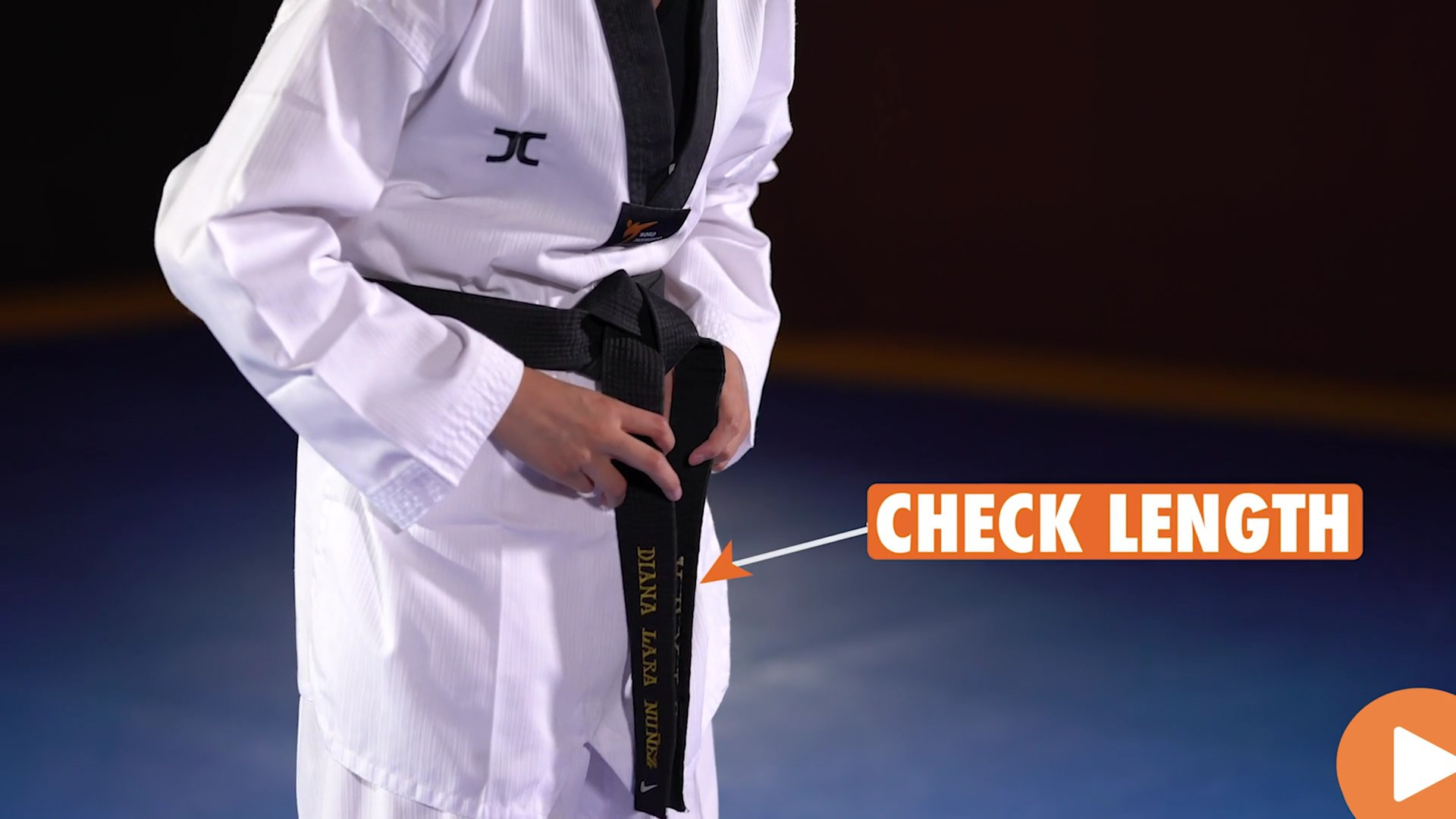
Pull it tight
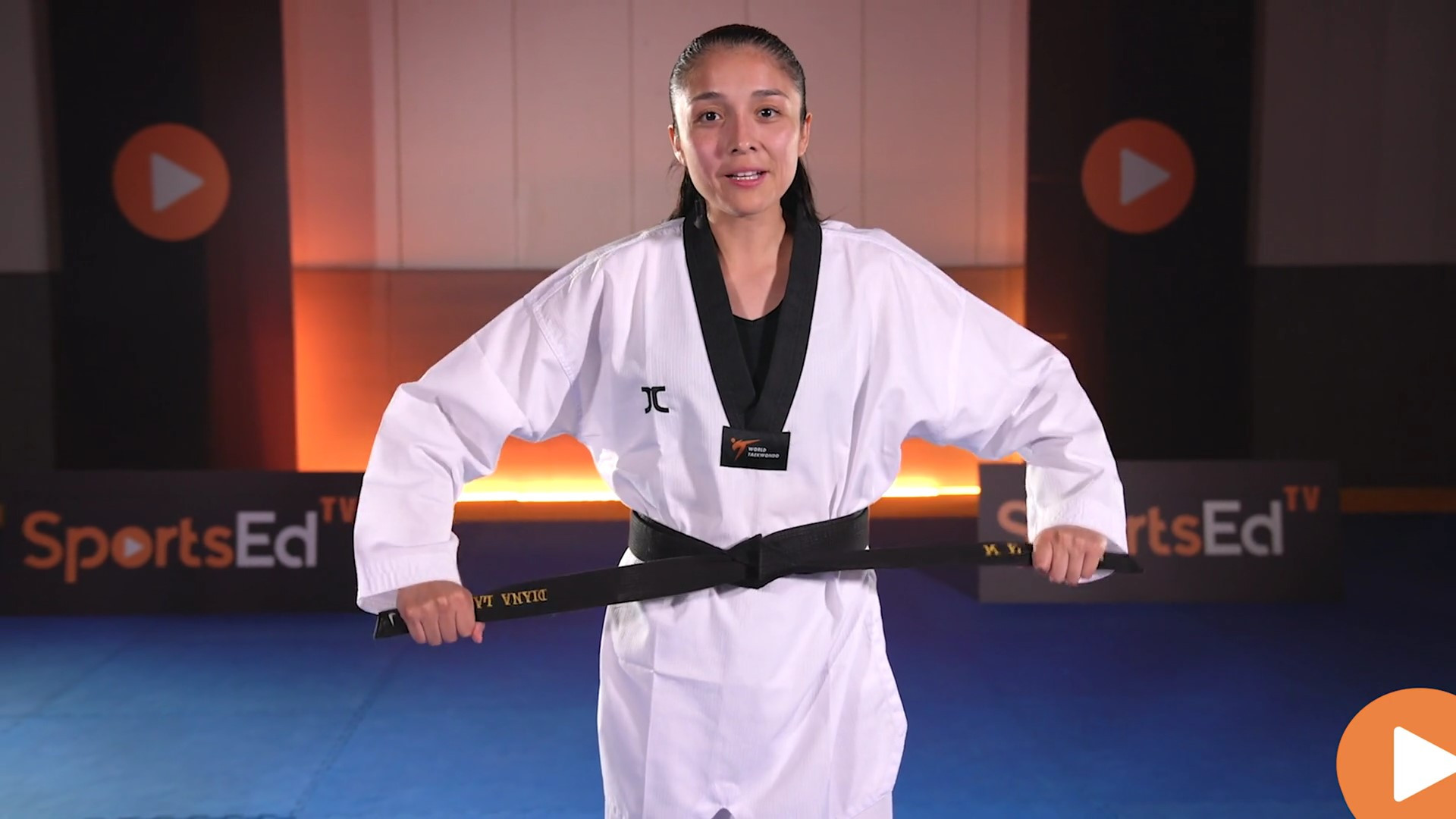
Congratulations, you have now tied your Taekwondo belt correctly!
Common Mistakes to Avoid When Tying Your Taekwondo Belt
While the steps for tying your Taekwondo belt may seem simple, there are some common mistakes that you should avoid. One of the most common mistakes is tying the belt too loosely. A loose belt can be a distraction during training and can even cause injury. Make sure to pull the belt tight after each step to ensure a snug fit.
Another common mistake is tying the belt too high or too low on the waist. The belt should be tied at the natural waistline, which is typically just above the hips.
Finally, make sure that the belt is centered on your waist. A crooked belt can be a distraction and can even indicate a lack of respect for the art.
Tips for Keeping Your Taekwondo Belt Tied During Class
Now that you know how to tie your Taekwondo belt correctly, it's important to keep it tied during class. Here are some tips to help keep your belt in place:
- Make sure the belt is tied snugly.
- Avoid fidgeting with the belt during class.
- If the belt comes loose, excuse yourself and retie it.
By following these tips, you can ensure that your belt stays tied during class and that you can focus on your practice.
How to Care for Your Taekwondo Belt
Maintaining and caring for your Taekwondo belt is an important part of respecting the art. Here are some tips to care for your belt
Avoid Washing:
Taekwondo belts generally should not be washed. They are designed to last for many years without needing to be cleaned in this way. Some believe the belt holds the hard work, effort, and essence of your martial arts journey and washing it would symbolically remove this.
Hand Clean if Necessary:
If your belt gets extremely dirty, you can lightly clean it by hand. Use a damp cloth with a mild soap to spot clean any dirt. Make sure to let it air dry completely before rolling or storing it.
Do Not Iron:
Never iron your belt. This can damage the fabric. If your belt becomes wrinkled, it's best to simply leave it flat for a time and the wrinkles should ease out naturally.
Roll it Properly:
After each class, roll your belt neatly from one end to the other. This is a common way to store the belt and helps to keep it in good condition and wrinkle-free.
Store Correctly:
Keep your belt in a cool, dry place away from direct sunlight. High temperatures and sunlight can cause colors to fade and material to degrade.
Respect Your Belt:
Never let your belt touch the ground unnecessarily, and always handle it with clean hands. In martial arts, your belt is not just a tool or accessory, it's a symbol of your progress, dedication, and respect for the art. Always treat it as such.
By following these steps, you'll help to ensure your Taekwondo belt lasts as long as possible and stays in good condition as a symbol of your journey and achievements in martial art.
The Significance of the Taekwondo Belt Colors
In Taekwondo, the color of your belt signifies your rank and level of mastery in the art. The belt colors progress from white to black, with various colors in between. Here is a breakdown of the belt colors and their meanings:
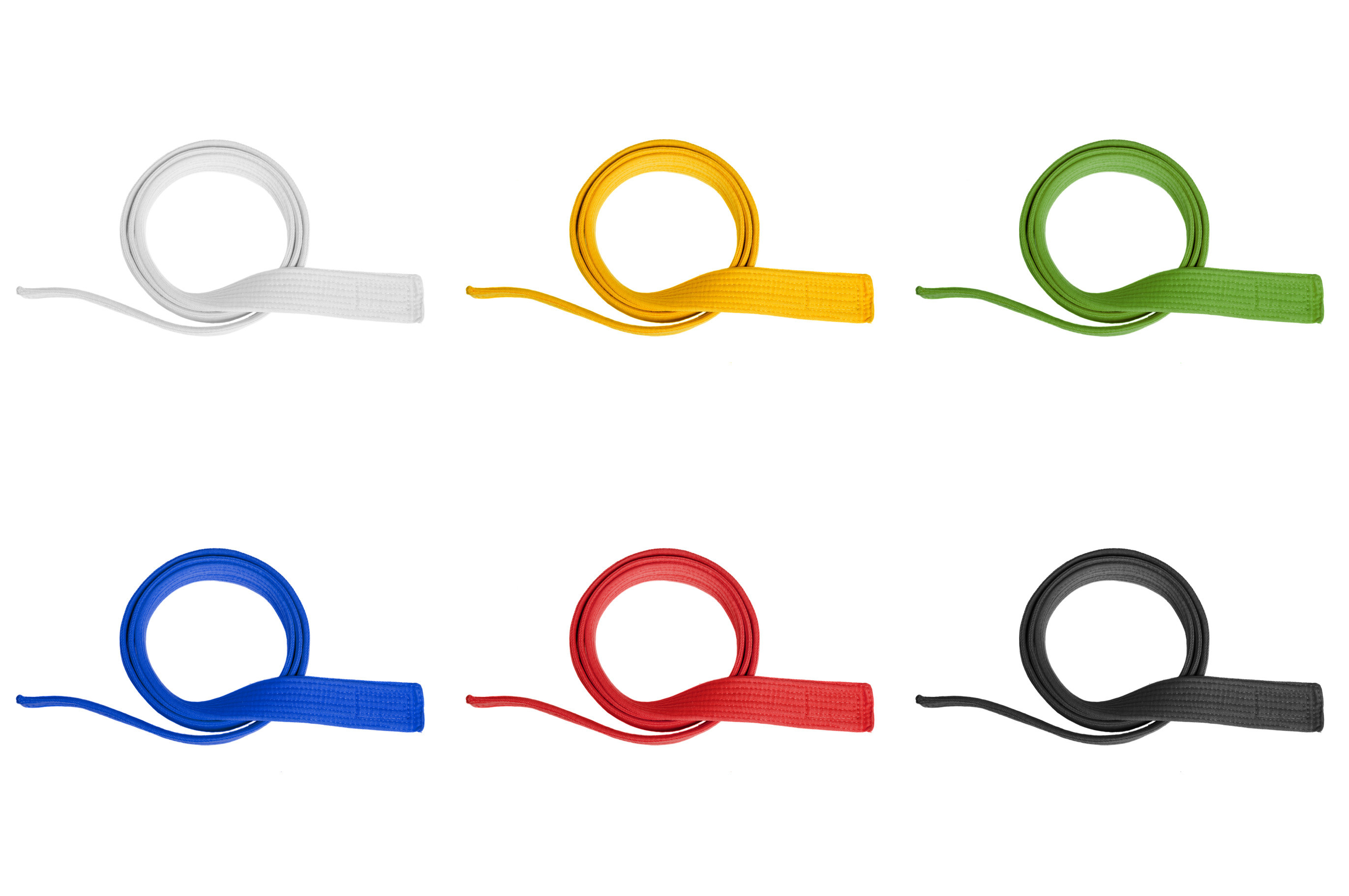
White signifies purity and innocence. It is the color of the beginner, who has no knowledge of the art.
Yellow signifies the first ray of sunlight, which illuminates the darkness and brings enlightenment. It is the color of the beginner who is beginning to learn the art.
Green signifies growth and the beginning of a journey. It is the color of the beginner who is starting to develop their skills.
Blue signifies the sky, which is infinite and limitless. It is the color of the intermediate student who is beginning to master the art.
Red signifies danger, warning the student to exercise control and caution. It is the color of the advanced student who has mastered the art.
Black signifies the darkness that engulfs the beginner and hides the master. It is the color of the master who has achieved the highest level of mastery in the art.
Belt Tying Etiquette in Taekwondo
In Taekwondo, belt tying is more than just a practical matter – it is also a matter of etiquette. Here are some tips for belt-tying etiquette in Taekwondo:
- Always tie your belt before entering the dojang (training hall).
- Do not wear your belt outside of the dojang.
- Never let your belt touch the ground.
- Do not wash your belt until you have achieved the rank of black belt.
By following these etiquette tips, you can show respect for the art and your fellow students.
Conclusion: Mastering the Art of Tying Your Taekwondo Belt
Tying your Taekwondo belt may seem like a small detail, but it is an important part of your practice. By following these step-by-step instructions and tips, you can ensure that you tie your belt correctly and with respect for the art. Remember, your belt represents your level of mastery and dedication, so take pride in tying it properly. With practice and dedication, you can master the art of tying your Taekwondo belt and continue on your journey toward becoming a Taekwondo master.




